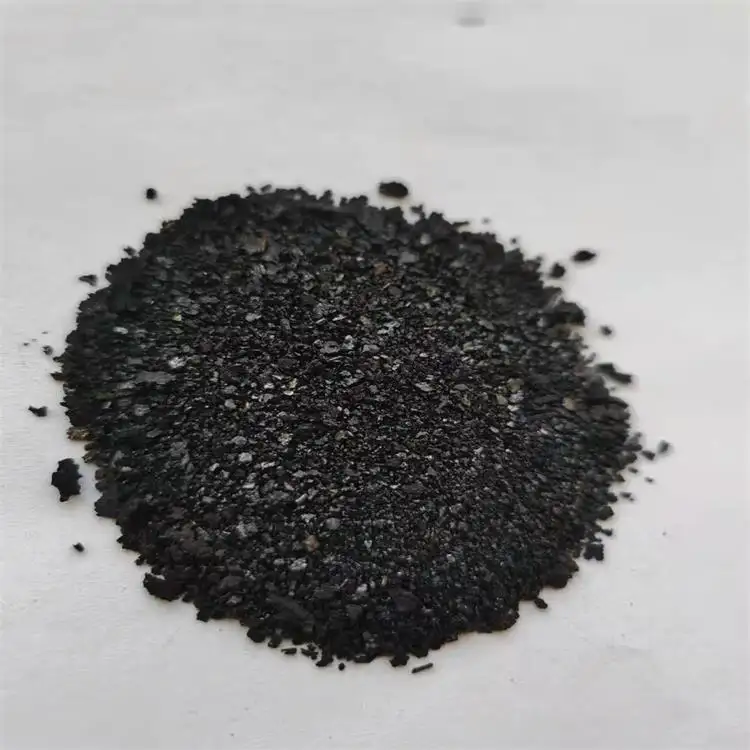Leading Exporter of Sulphur Black Dyes for Textile and Industrial Applications Worldwide
The Global Market for Sulphur Black Dyes An Overview of Export Trends
Sulphur black dyes have established themselves as vital components in the textile and dyeing industries, offering vivid color options for various fabrics, particularly cotton and other cellulose-based materials. These dyes are favored for their excellent fastness properties, affordability, and ease of application. As global demand for textiles continues to rise, the export market for sulphur black dyes presents significant opportunities and challenges.
What Are Sulphur Black Dyes?
Sulphur black dyes belong to a class of dyes that are created through the reaction of sulphur with organic compounds. They are primarily used due to their deep black hue and enhanced stability when exposed to light and washing. The dyes are water-insoluble and require a reduction process to dissolve before application. Once applied to the fabric, they are reoxidized to establish a strong bond, ensuring longevity and durability. This makes them an ideal choice for applications in denim, workwear, and other industrial textiles.
Export Trends and Market Growth
The global market for sulphur black dyes is driven by several factors, including population growth, urbanization, and increasing consumer demand for textiles. According to market research, the textile dyeing industry is expected to witness steady growth, particularly in regions such as Asia-Pacific, Europe, and North America. In Asia, countries like China and India are leading players, known for their vast textile manufacturing capacities and lower production costs.
China remains a dominant exporter of sulphur black dyes, supplying a significant portion of the global demand. The country benefits from an extensive network of chemical manufacturing facilities and a growing investment in sustainable dyeing technologies. India, with its rich tradition in textiles, is another key player in the export market. The combination of skilled labor, a wide range of dye products, and increasing compliance with international environmental standards have bolstered India's position as a preferred source of sulphur black dyes.
sulphur black dyes exporter

Sustainability and Environmental Concerns
While the market for sulphur black dyes is expanding, it is also facing scrutiny over environmental and health concerns. The production and application of synthetic dyes, including sulphur blacks, can pose risks to ecosystems and human health if not managed properly. As a result, there is a growing emphasis on sustainable practices within the dyeing industry. Manufacturers are increasingly investing in environmentally friendly processes, such as water-efficient dyeing methods and the use of biodegradable chemicals.
Governments and environmental organizations are advocating for stricter regulations on chemical usage, which impacts export dynamics. Companies that adapt to these changes by adopting green practices may gain a competitive edge in the international market. Additionally, the rise of eco-conscious brands is influencing dye selection, driving demand for dyes that can be certified as environmentally friendly or sustainable.
The Future of Sulphur Black Dye Exports
The future of sulphur black dye exports will likely hinge on innovation and adaptability. Manufacturers are exploring new formulations that minimize environmental impact while maintaining quality. Moreover, the integration of digital technologies into textile manufacturing, such as automated dyeing systems and real-time monitoring of dye applications, presents opportunities to enhance efficiency and compliance with environmental regulations.
In conclusion, while the sulphur black dye export market is poised for growth, it must navigate challenges related to sustainability and regulatory compliance. With increasing global demand and the potential for innovation, players in this market can harness opportunities to drive forward a more sustainable future in textile dyeing. By balancing productivity and ecological responsibility, sulphur black dye exporters can pave the way for a successful and sustainable industry landscape.
-
Thermal Stability Analysis of Bromo Indigo Pigments
NewsJun.06,2025
-
Sulphur Black Dye Oxidation Process Optimization
NewsJun.06,2025
-
Lightfastness Testing of Bromo Indigo Dyed Denim
NewsJun.06,2025
-
Granule Size Distribution and Jeans Color Uniformity
NewsJun.06,2025
-
Gradient Dyeing Methods with Indigo Blue Granules
NewsJun.06,2025
-
Dyeing Temperature Effects on Sulphur Black Color Fastness
NewsJun.06,2025
-
Sulphur Black Dyes in Daily Use
NewsMay.07,2025

Sulphur Black
1.Name: sulphur black; Sulfur Black; Sulphur Black 1;
2.Structure formula:
3.Molecule formula: C6H4N2O5
4.CAS No.: 1326-82-5
5.HS code: 32041911
6.Product specification:Appearance:black phosphorus flakes; black liquid

Bromo Indigo; Vat Bromo-Indigo; C.I.Vat Blue 5
1.Name: Bromo indigo; Vat bromo-indigo; C.I.Vat blue 5;
2.Structure formula:
3.Molecule formula: C16H6Br4N2O2
4.CAS No.: 2475-31-2
5.HS code: 3204151000 6.Major usage and instruction: Be mainly used to dye cotton fabrics.

Indigo Blue Vat Blue
1.Name: indigo blue,vat blue 1,
2.Structure formula:
3.Molecule formula: C16H10N2O2
4.. CAS No.: 482-89-3
5.Molecule weight: 262.62
6.HS code: 3204151000
7.Major usage and instruction: Be mainly used to dye cotton fabrics.

